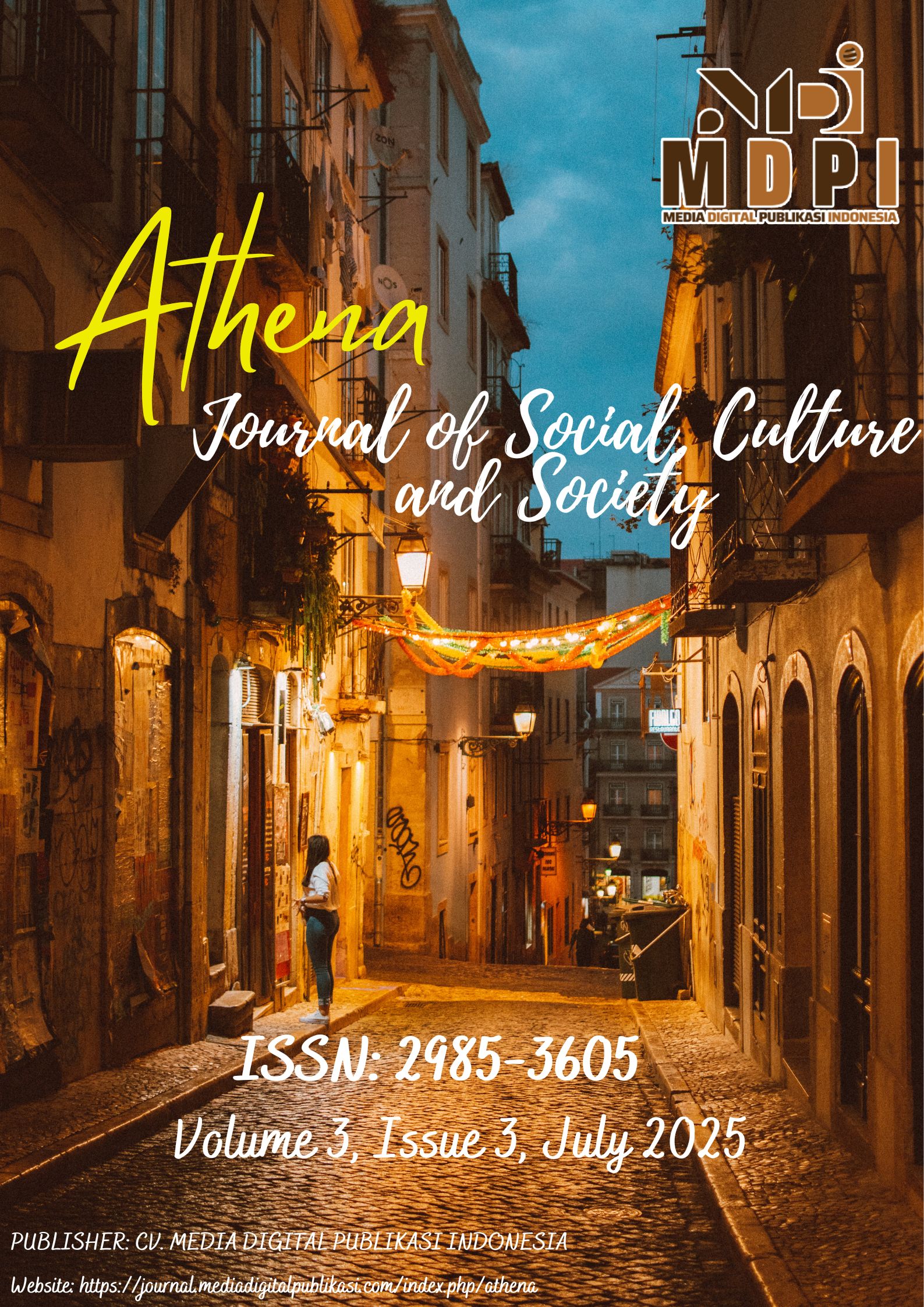Convergence of Radar Cirebon's Journalistic Works from Print Media to Digital Platforms
DOI:
https://doi.org/10.58905/athena.v3i3.431Keywords:
Convergence, Digital Platforms, Integration, Journalism, Print MediaAbstract
Media convergence is the integration of various platforms in the presentation of information that has become a phenomenon of the journalism industry. This research aims to analyze media convergence in improving the quality of journalistic work and the journalism industry's interpretation of media convergence. With a focus on changes in readers' content consumption habits. This research uses a qualitative approach. This data collection technique uses observation, interviews using purposive sampling techniques, and written document analysis. The unit of analysis of this research involved the general manager and journalists of Radar Cirebon as well as 3 students as news readers. The results showed that Radar Cirebon has implemented media convergence as a response to technological developments and changes in reader consumption patterns that want fast access to news and various formats. However, some aspects of convergence such as information presentation and ad bundling tactics still need to be optimized. The conclusion of this study confirms that although all dimensions of convergence have been implemented, evaluation and training of competent human resources are needed to improve the quality of journalistic works on various platforms of Radar Cirebon
References
A. J. Hermawan, “SELEBRITAS VANESSA ANGEL DALAM INFOTAINMENT Abdul Jalil Hermawan Perkambangan jurnalisme melaju dengan begitu untuk mendapatkan informasi terbaru . Tetapi walaupun perkembangan dunia jurnalisme bukan hanya dari cara penyajian konten berita , Kehadiran den,” vol. 11, no. 1, 2023.
Y. Pusparisa, “Media Konvensional di Indonesia Menuju Senjakala,” Katadata. Accessed: Feb. 04, 2024. [Online]. Available: https://databoks.katadata.co.id/teknologi-telekomunikasi/statistik/adb812f4b047394/media-konvensional-di-indonesia-menuju-senjakala
H. Jenkins, Convergence Culture Where Old and New Media Collide. New York: New York Press, 2006.
R. Gordon, “Convergence defined (The Meanings and Implications of Convergence),” Online Journal. Rev., Jan. 2003, Accessed: Feb. 05, 2025. [Online]. Available: https://www.academia.edu/948528/Convergence_defined_The_Meanings_and_Implications_of_Convergence_
W. Lanandie, W. A. Cahyadi, A. P. Rachmanto, A. J. Hermawan, U. Swadaya, and G. Jati, “RCTV ’ s " Wewara " Program in Preserving Cirebon Local,” vol. 3, pp. 237–246, 2024.
M. Hikmat Mahi, “Jurnalistik: Literary Journalism,” PRENADAMEDIA GROUP. Accessed: Feb. 05, 2025. [Online]. Available: https://etheses.uinsgd.ac.id/16269/1/BUKU JURNALISTIK OK.pdf
T. W. K. Kurniasari and A. Rahman, “Perlindungan Hukum Bagi Pelaku Usaha Umkm Terhadap Penyalahgunaan Posisi Dominan Platform Digital : Marketplace Melalui Penetapan Harga Dan Penguasaan Pasar,” REUSAM J. Ilmu Huk., vol. 10, no. 2, p. 131, 2023, doi: 10.29103/reusam.v10i2.9577.
R. Elisha and W. Putri, “Penerapan Konvergensi Newsroom Dalam Ruang Redaksi Media Regional Solopos Application of Newsroom Convergence in Regional Media Solopos Newsroom,” J. Komun. dan Media, vol. 03, no. 01, pp. 29–42, 2022.
A. Azizah, “Strategi Konvergensi Media Cetak pada Surat Kabar Radar Cirebon,” Skripsi, pp. 1–156, 2021.
Sugiyono, Metode Penelitian Kuantitatif Dan Kualitatif Serta R&D, no. April. 2013.
Tika Yulianti, “Eksistensi Media Massa Konvensional Di Tengah Terpaan Media Baru (New Media),” J. Kaji. dan Terap. Media, vol. 1, no. 1, pp. 1–10, 2020.
Downloads
Published
How to Cite
Issue
Section
License
Copyright (c) 2025 Alpin Ashary Muzhaffar, Chairul Ardiansyah, Ibnu Hiban Gymnastiar, Farida Nurfalah, Abdul Jalil Hermawan

This work is licensed under a Creative Commons Attribution-ShareAlike 4.0 International License.











